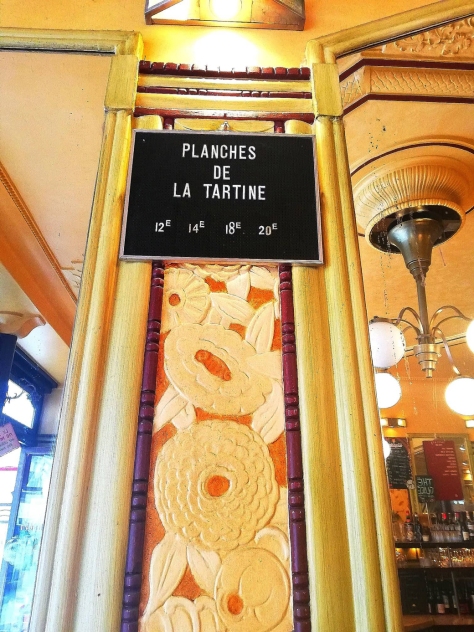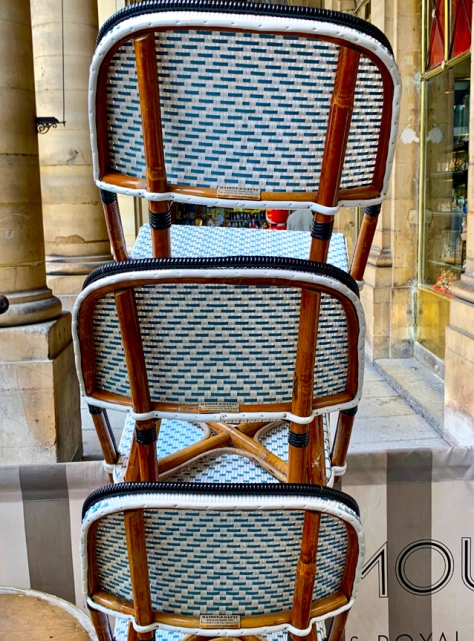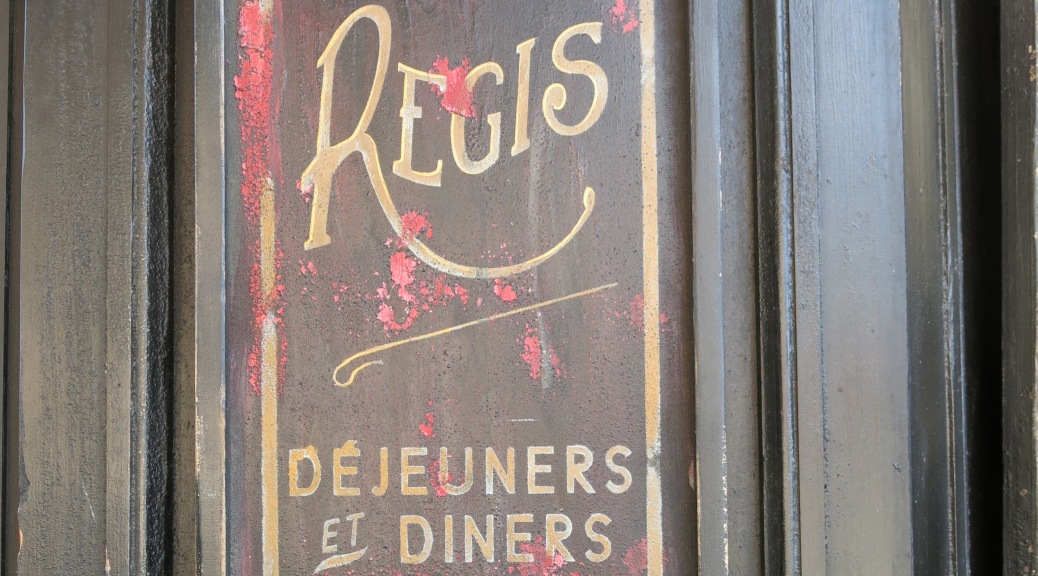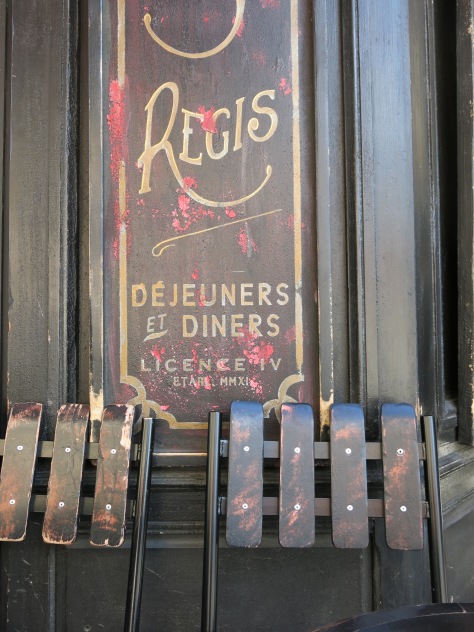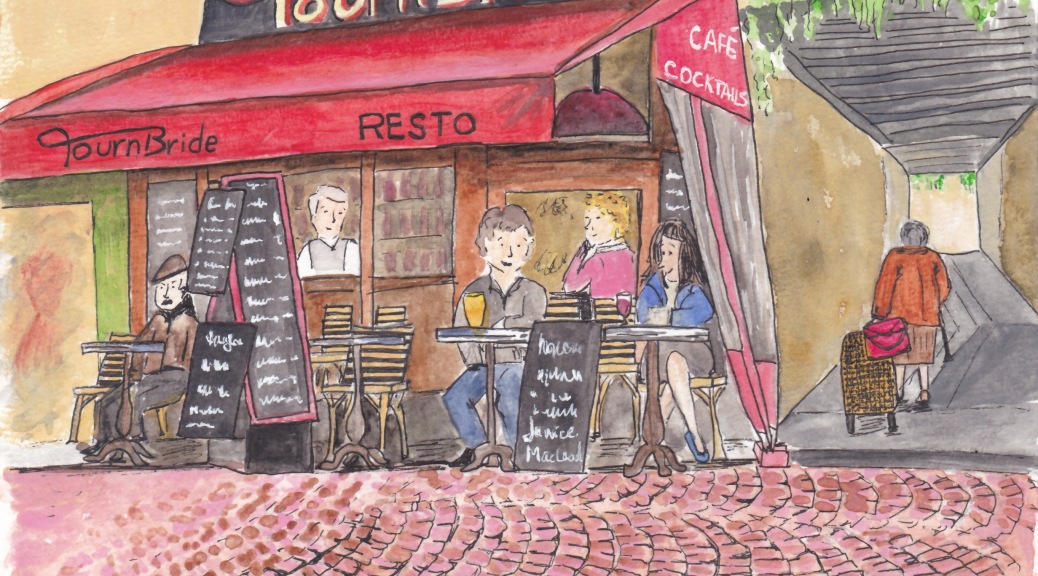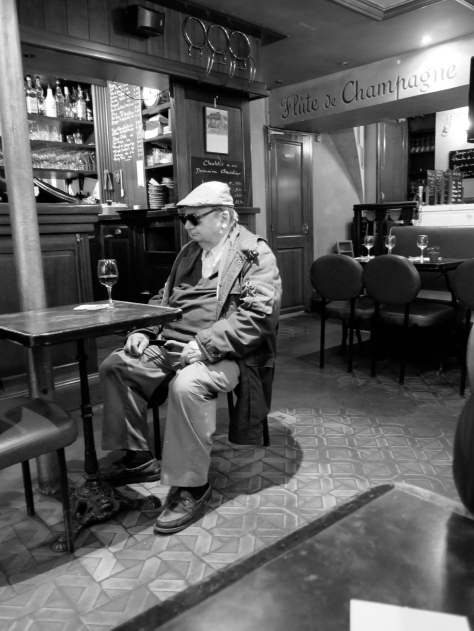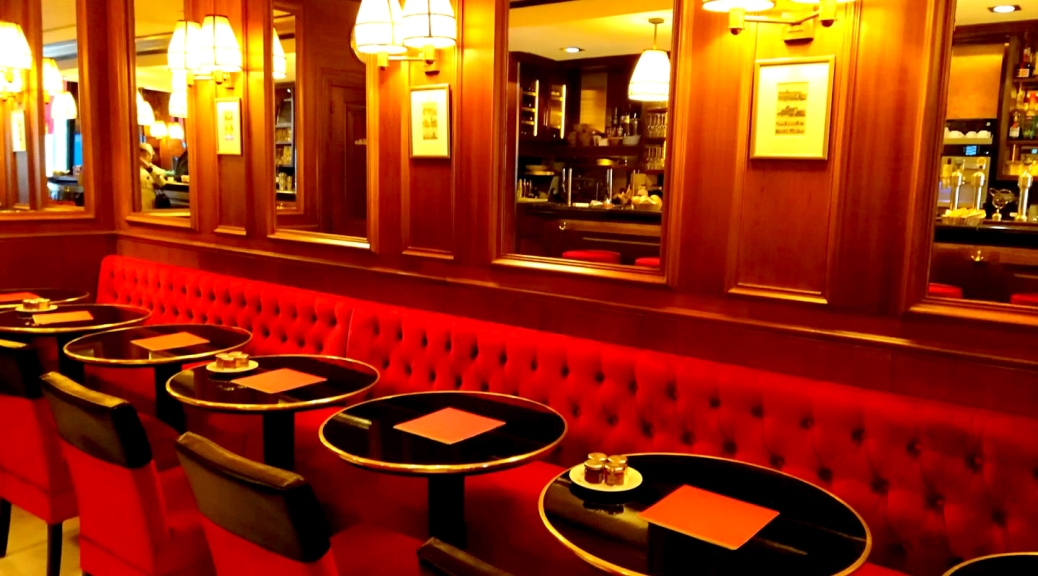Author Lily Heise (Je T’Aime, Me Neither; Je T’Aime…Maybe?) shares her favorite romantic spots to cozy up with your amour this Valentine’s Day—or any day.
Parisian cafés serve a variety of purposes. Regulars pop in for their morning petit café on the way to work. Some come mid morning to linger over un café crème. Le plat du jour satisfies busy office workers lunchtime hunger pains and there’s nothing quite as perfect as celebrating the end of the work day over a glass of le vin du mois. Cafés also serve as the ideal spot for dates in Paris. That said, your café du coin might not be the right place for some wooing. From historic to hidden, these cafés all offer the perfect setting for a romantic meet-up in the City of Love:
Le Jardin du Petit Palais
Avenue Winston Churchill, 8ème; 01.40.07.11.41

For a touch of elegant grandeur, rendezvous with your romantic interest in front of Le Petit Palais, the City of Paris Art Museum, where its glitzy facade will already set the tone for your chic date. Located overlooking an opulent, leafy courtyard is one of Paris’s most attractive museum cafés. If things are going well, you can suggest extending your date by perusing the museum’s collections ranging from Roman statues to Impressionist greats (and it’s free!).
Musée de la Vie Romantique
Hotel Scheffer-Renan, 16 Rue Chaptal, 9ème; 01.55.31.95.67

You can’t find a more suitable setting for a romantic meet-up then at the City of Paris Museum of the Romantic Era (Musée de la Vie Romantique). Built in 1830 for Dutch painter Ary Scheffer, the house became the hub of intellectual Paris of the Romantic Era of the first half of the 19th century. On a given soirée held at the house, you might have crossed paths with Georges Sand, Chopin, Eugène Delacroix, or Franz Liszt. The small museum houses art and artifacts linked to the period (also free), however, its equally romantic courtyard café, nestled within the greenery and flowers of the garden, is open to anyone, and is sublimely romantique.
Café Louis-Philippe
66 Quai de l’Hotel de Ville, 4ème; 01.42.72.29.42

This charming joint is a great choice for a classic café experience without having to take out a mortgage to pay for two coffees like at most historic cafés. With a simple old-school decor of wooden bistro tables and chairs, a beautiful iron spiral staircase, a wonderful sunroom and terrace looking towards one of the most alluring streets of Paris (Rue des Barres), your petit café or petit Chablis will be delivered by an aproned waiter who will leave you be, Parisian style, so you can take your time gazing into your chéri/e’s eyes from across the table. Afterwards, keep the romancing going by strolling up Rue des Barres and through the quiet streets of the lower Marais.
Le Zimmer
1 Place du Chatelet, 1ère; 01.42.36.74.03

If you’re looking to combine history with glamour, the centuries-old café of the Chatelet Theatre fits the bill perfectly. Opened in 1896 during the great brasserie craze of Paris, this café has had a makeover—relooking—by star interior designer Jacques Garcia who, thankfully, kept many of its historic features and seductive feel of La Belle Epoque—including gilded mirrors, painted wood ceilings, and velour drapery. It’s Paris romantic chic at its best—without too much of a fuss.
Hôtel des Marronniers
21 Rue Jacob, 6ème; 01.43.25.30.60

There are a few hidden cafés in Paris and the one located in this discreet hotel in the 6th arrondissement is one of the most romantic. Meet your date nearby, perhaps in front of Saint-Germain-dès-Pres church, and then lead around to this address, where she or he will be instantly enchanted by the peaceful courtyard of the hotel. Going inside, make your way to the back, and you’ll find a glassed-in sunroom behind which is a terrace with intimate seating amidst flowers and statues. It’s not so well known, so you might even have the café all the yourselves.
Le Lieu Secret
7 Rue Francis de Pressensé, 14ème; 01.45.40.07.50

Another hidden café, the “secret place” was formerly known as L’Entrepot, a historic cultural center that has recently been saved from closure. The building has already seen a few lives. Originally a textile warehouse (“entrepot” in French), in 1975 it became an important venue for the promotion of avant garde cinema. This “new” space hasn’t abandoned its roots, so after having a drink in its “secret” café—with soaring warehouse ceilings, a large glass atrium, and a quiet back courtyard—you could further your date with a play, film, or concert.
Pavillon des Canaux
39 Quai de la Loire, 19ème; 01.73.71.82.90
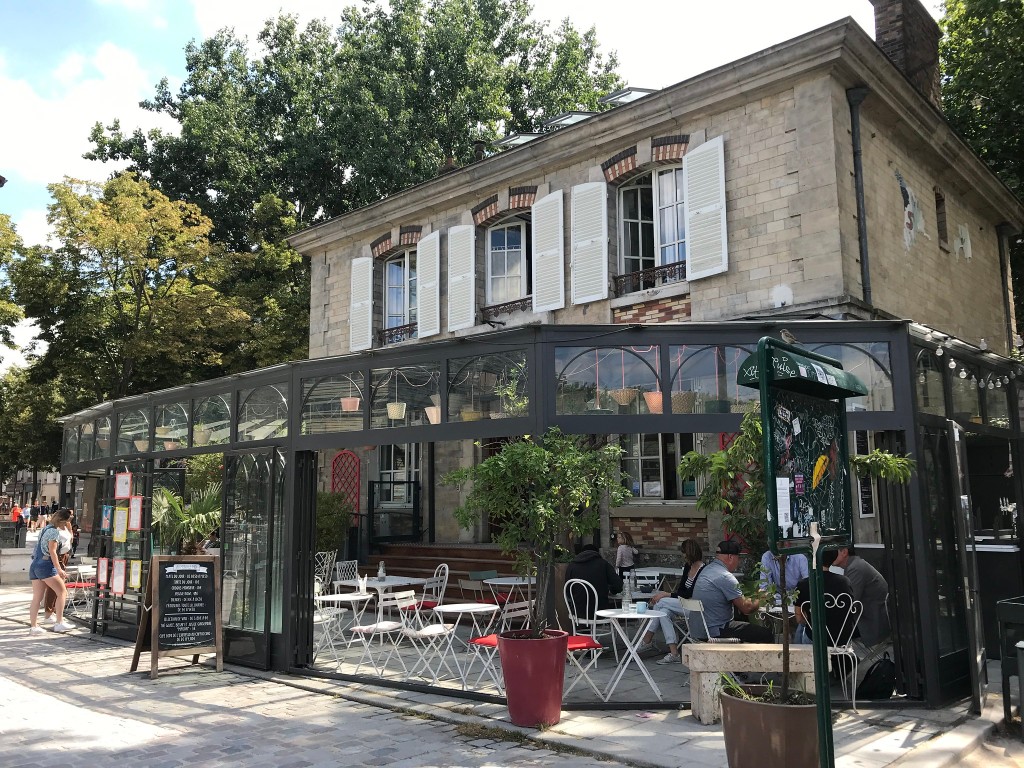
Perfect for dreamy romantics, this whimsical café is found at the end of the Basin de la Villette, where it becomes the Canal de l’Ourcq. This former lock-keeper’s home has been converted into an eclectic space where you can choose to sit in a plush sofa in the living room, around the retro table in the kitchen, in the bathtub in the bathroom…or on the bed in the bedroom. After your drink, you can extend your date with a stroll along the canal.
Peonies
81 Rue du Faubourg Saint-Denis, 10ème
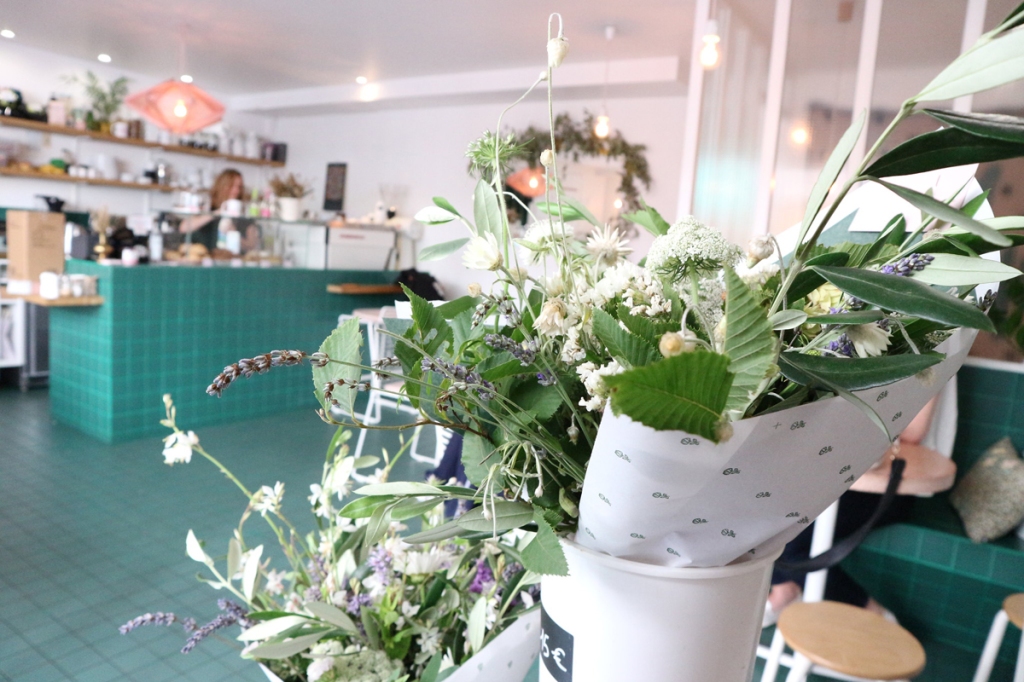
As you might guess from its name, this modern café doesn’t only offer up a good cup of coffee, it doubles as a flower shop. So before or after you’ve sipped your way through an excellent latte and nibbled on a piece of moist cake, you can surprise your date with one of their original flower bouquets. The café is small, so avoid taking a date here on weekend afternoons. If it’s full, you could always get your coffee and bouquet to go!
LILY HEISE is a Canadian travel writer, author, and romantic expert who has lived in Paris since 2000. Her writing has appeared in The Huffington Post, Conde Nast Traveler, Frommer’s, Playboy.com (Travel), among others. She is also the author of two lively books on searching for love in Paris, Je T’Aime, Me Neitherand Je T’Aime…Maybe?. Lily shares tips on Paris date ideas and romantic travel on her website and leads romantic tours of Paris.
Discover her world at www.jetaimemeneither.com.
Facebook | Instagram | Twitter
Cover photo courtesy of Pavillon des Canaux
SIGN UP FOR OUR NEWSLETTER and get the latest articles, news, and more. (Sign-up in the left-hand menu bar on desktop, or at the bottom of the page on mobile.)













